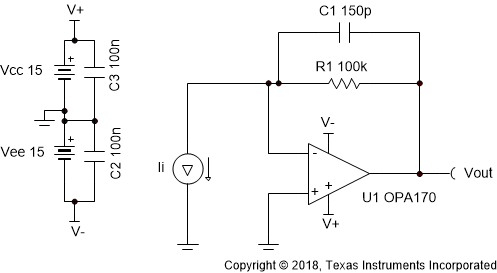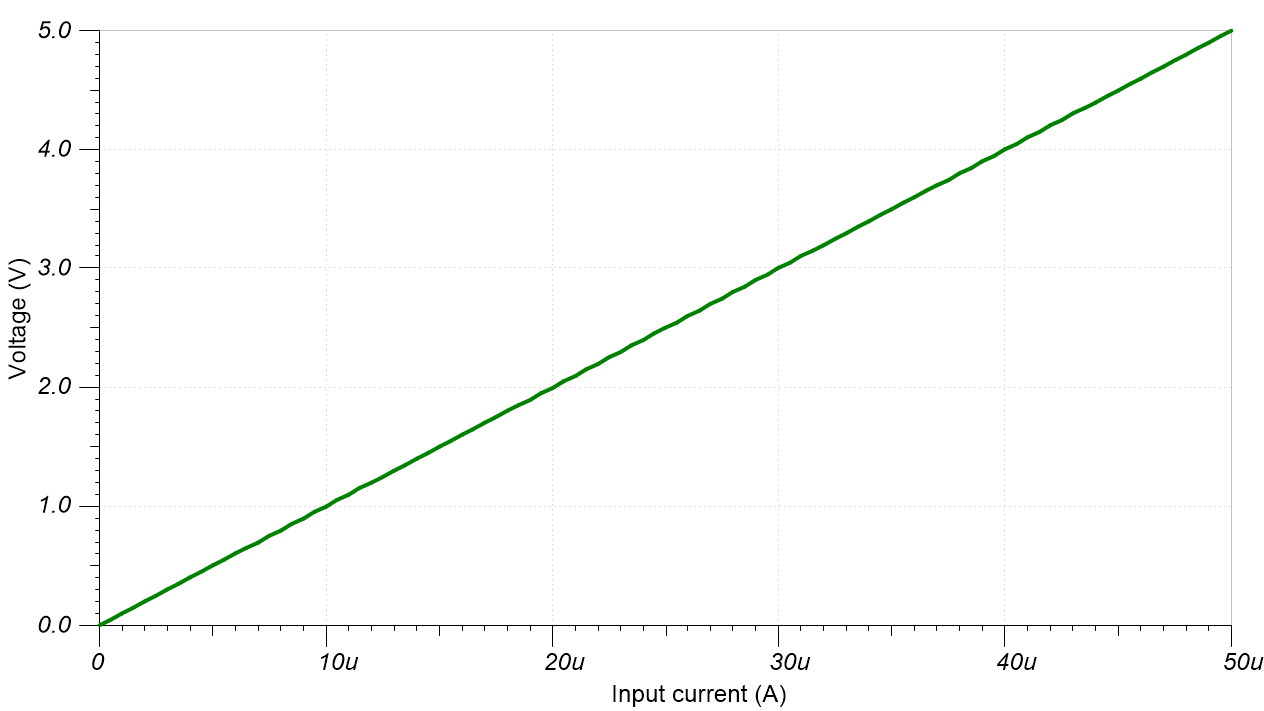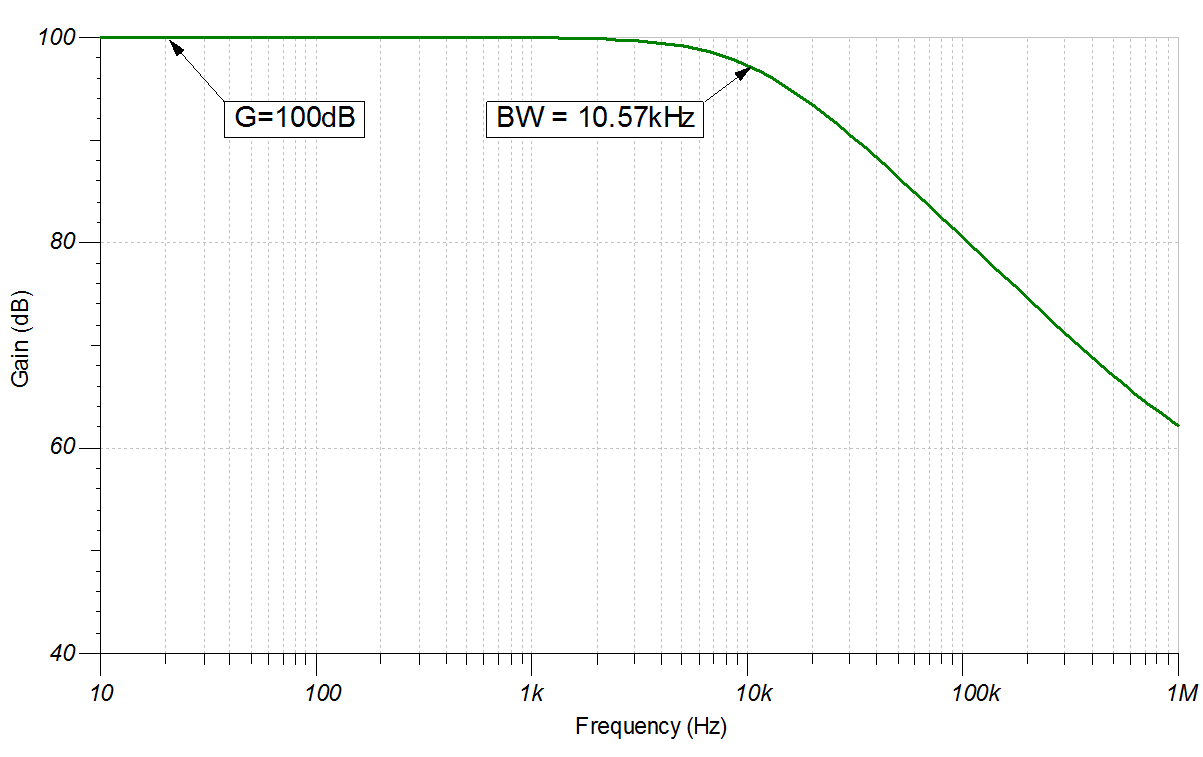SBOA268B February 2018 – September 2024 OPA1671 , OPA170 , OPA855 , OPA858
Design Goals
| Input | Output | BW | Supply | |||
|---|---|---|---|---|---|---|
| IiMin | IiMax | VoMin | VoMax | fp | Vcc | Vee |
| 0A | 50µA | 0V | 5V | 10kHz | 15V | –15V |
Design Description
The transimpedance op amp circuit configuration converts an input current source into an output voltage. The current to voltage gain is based on the feedback resistance. The circuit is able to maintain a constant voltage bias across the input source as the input current changes which benefits many sensors.

Design Notes
- Use a JFET or CMOS input op amp with low bias current to reduce DC errors.
- A bias voltage can be added to the non-inverting input to set the output voltage for 0 A input currents.
- Operate within the linear output voltage swing (see Aol specification) to minimize non-linearity errors.
Design Steps
- Select the gain resistor.
- Select the feedback capacitor to
meet the circuit bandwidth.
- Calculate
the necessary op amp gain bandwidth (GBW) for the circuit to be stable.
- Cs: Input source capacitance
- Cd: Differential input capacitance of the amplifier
- Ccm: Common-mode input capacitance of the inverting input
Design Simulations
DC Simulation Results

AC Simulation Results

Design References
Texas Instruments, Simulation for Transimpedance Amplifier, SBOC501 SPICE simulation file
Texas Instruments, 1MHz, Single-Supply, Photodiode Amplifier, TIPD176 reference design
Design Featured Op Amp
| OPA170 | |
|---|---|
| Vcc | 2.7V to 36V |
| VinCM | (Vee–0.1V) to (Vcc –2V) |
| Vout | Rail–to–rail |
| Vos | 0.25mV |
| Iq | 0.11mA |
| Ib | 8pA |
| UGBW | 1.2MHz |
| SR | 0.4V/µs |
| #Channels | 1, 2, and 4 |
| OPA170 | |
Design Alternate Op Amp
| OPA1671 | |
|---|---|
| Vcc | 1.7V to 5.5V |
| VinCM | Rail–to–rail |
| Vout | (Vee+10mV) to (Vcc-10mV) at 275µA |
| Vos | 250µV |
| Iq | 940µA |
| Ib | 1pA |
| UGBW | 12MHz |
| SR | 5V/µs |
| #Channels | 1 |
| OPA1671 | |